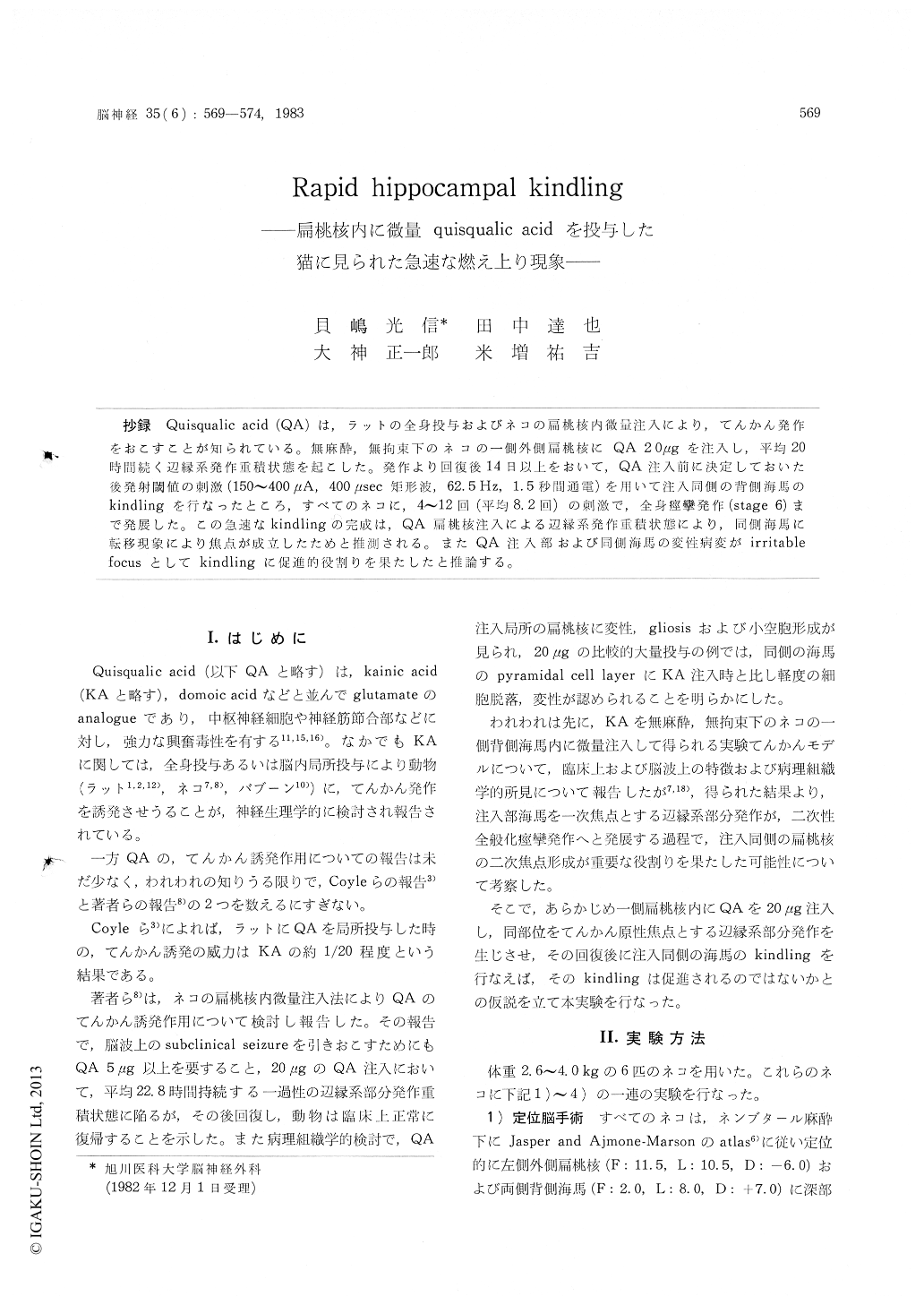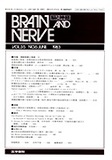Japanese
English
- 有料閲覧
- Abstract 文献概要
- 1ページ目 Look Inside
抄録 Quisqualic acid (QA)は,ラットの全身投与およびネコの扁桃核内微量注入により,てんかん発作をおこすことが知られている。無麻酔,無拘束下のネコの一側外側扁桃核にQA 20μgを注入し,平均20時間続く辺縁系発作重積状態を起こした。発作より回復後14日以上をおいて,QA注入前に決定しておいた後発射閾値の刺激(150〜400μA,400μsec矩形波,62.5Hz,1.5秒間通電)を用いて注入同側の背側海馬のkindlingを行なったところ,すべてのネコに,4〜12回(平均8.2回)の刺激で,全身痙攣発作(stage 6)まで発展した。この急速なkindlingの完成は,QA扁桃核注入による辺縁系発作重積状態により,同側海馬に転移現象により焦点が成立したためと推測される。またQA注入部および同側海馬の変性病変がirritablefocusとしてkindlingに促進的役割りを果たしたと推論する。
Quisqualic acid (QA) is a potent neuroexcitant and a heterocyclic analogue of glutamate as is kainic acid. Twenty micrograms of QA in unila-teral lateral amygdaloid nucleus of cats produced a trasient limbic status epilepticus lasting 20-30 hours. Over 14 days after recovery from the limbic status, the animals recieved daily electrical stimulation to the ipsilateral hippocampus at the intensity of afterdischarge threshold which was determined before the injection of QA. These stimulations resulted in secondarily generalized convulsive seizures in all animals within 4 to 12 days. Spontaneous secondarily generalized seizures were confirmed in two cats after completion of the hippocampal kindling. This rapid completion of the kindling process is interesting phenomenon in contrast to the report that the hippocampal kindling took nearly 60 days. This rapid comple-tion of the kindling effect is considered to be due to the transfer effect (Goddard, 1975) esta-blished in the ipsilateral hippocampus by severe bombardments from the amygdala stimulated by the injection of QA as the primary focus.
In addition, the pathological changes in the amygdala and hippocampus on the injected side might be related to the rapid kindling process of the ipsilateral hippocampus as the irritable foci.

Copyright © 1983, Igaku-Shoin Ltd. All rights reserved.


